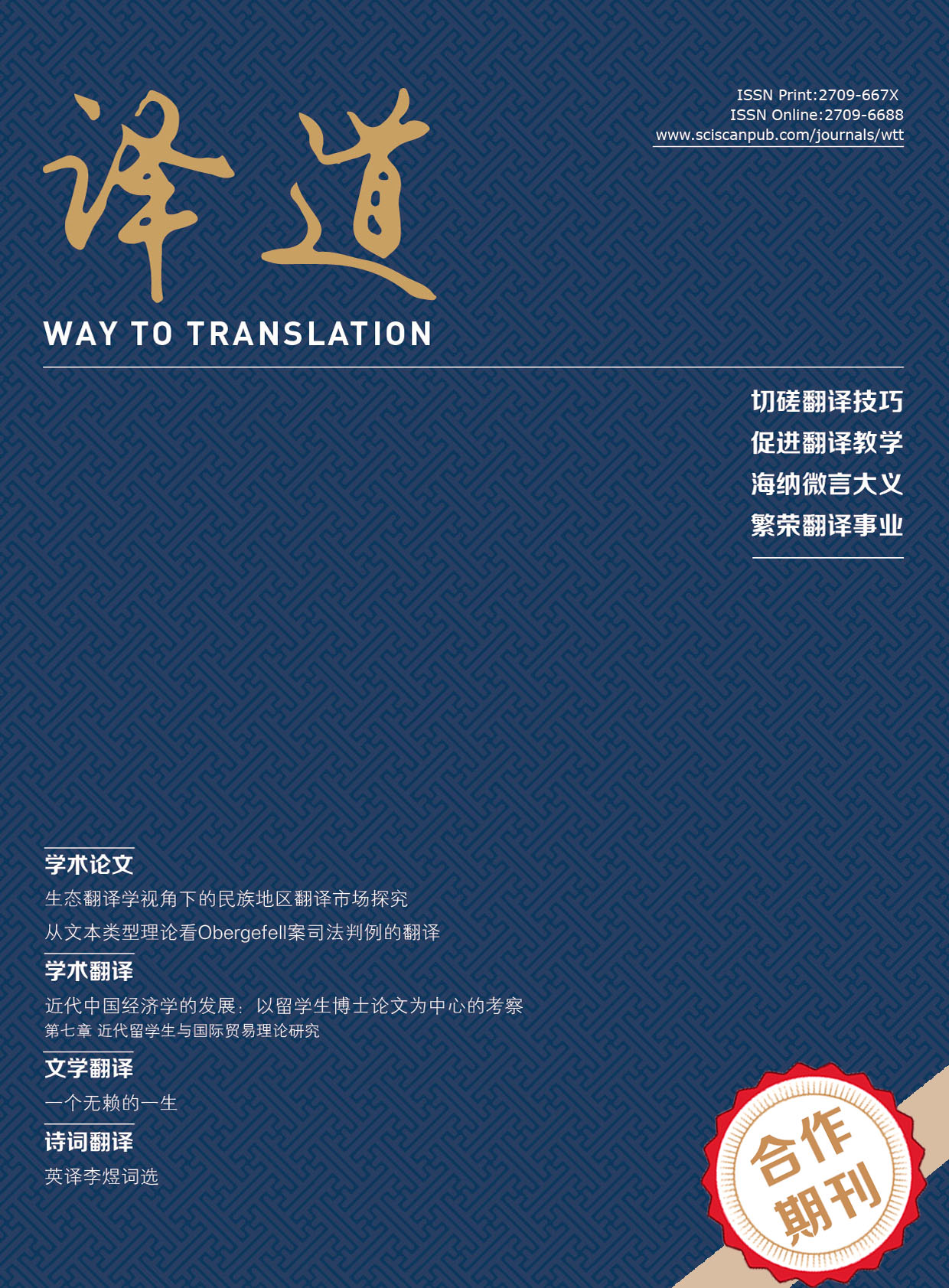Way to Translation
ISSN Print: 2709-667X
ISSN Online: 2709-6688
Contact Editorial Office
Subscribe to the latest published information from SCISCAN
通过意象分类研究古诗词外译 ——以王维《过香积寺》的三个西班牙语版本为例
A Study on the Translation of Ancient Poems by Image Classification —Taking the Three Spanish Versions of Wang Wei’s “Guoxiangjisi” as Example
- Authors: 徐志鸿
-
Information:
康普斯顿大学,马德里
-
Keywords:
Translation of classical Chinese poetry; Image classification; Images.古诗西译; 意象分类; 意象
- Abstract: “All scenery words are emotional words”, by this way, Mr. Wang Guowei reflects in a single sentence on the intimate relationship between images and Chinese poetry. Images are the most basic artistic units of Chinese ancient poetry. If we can use the most basic artistic units as the key points for translation and translation studies, the entire translation or research will be easier, more accurate, and clearer. If images can be classified according to Research on categories rather than individuals, the research would be even more effective. Therefore, this article takes the comparative study of Spanish versions of Wang Wei’s Guoxiangjisi by Chen Guojian, Iñaki Preciado Idoeta, and Guillermo Dañino as an example to demonstrate the application of image classification in translation studies. Images will be classified into two levels: the first level divides the images into four categories according to their attributes: landscape, small sceneries, images related to human beings, and Chinese proper nouns; the second level, according to functions, the images are divided into three categories: aesthetics, descriptive, and expressive. After the two-level classification is completed, the two are combined, and the combined double classification is used as a clue to explore whether the three translators have successfully converted the basic artistic unit, the images, into the translation. “一切景语,皆情语也”,王国维先生一语道明意象与中国诗词水乳交融的关系。意象可以说是中国古诗最基本的艺术单位,倘若在翻译、翻译研究中将最基本的艺术单位作为转换重点,整个翻译或研究过程便会更加顺畅、准确、清晰,而倘若将意象分类,根据类别而非个体进行研究,则更是事半功倍。因此,本文便以《过香积寺》陈国坚、毕隐崖、吉叶墨三个译本的比较研究为例,示范意象分类在翻译研究中的应用。将意象进行两层分类:第一层,将意象根据属性分为景观、小型景物、人事、中国专有名词四大类;第二层,根据功能分为审美、描绘、表达三大类。两层分类完成后,将二者结合,并以结合后的双重分类为线索探究三个译者是否成功将意象这一基本艺术单位转换到了译文之中。
- DOI: https://doi.org/10.35534/wtt.0101007
- Cite: -
















